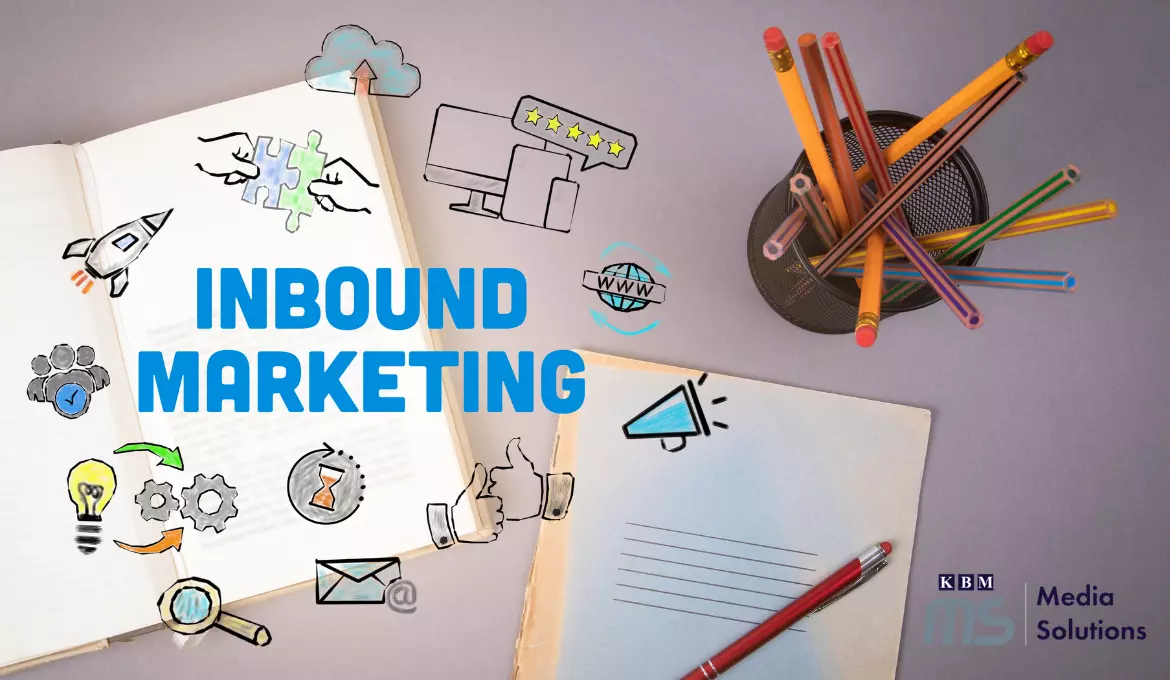Elements of an Effective Inbound Marketing Strategy

Posted on Apr 22, 2022
Over the past several years, Inbound marketing has become more and more well-known in the advertising and marketing world. In contrast to traditional outbound methods that involve cold calling and convincing an uninitiated audience to sell something, the principal goal of inbound advertising is to provide customers with worth. Following a series of messages, customers will be drawn to the business whenever their needs arise.
What is inbound marketing?
Inbound marketing, in simpler words, is the method of helping potential customers locate your business. It usually happens before the potential customer is in a position to buy; however, making contact earlier could result in brand recognition and ultimately leads and revenues. It is an inbound method that uses a variety of pull marketing such as content marketing, blog posts, events such, Search engine optimisation (SEO) and the social web, and much more -- to build brand awareness and bring in new customers.
Importance of Inbound marketing
The majority of consumers don't like unwanted calls and emails. The emails they receive from companies to which they do not have a subscription will be tossed into the junk mail folder. As people get more intelligent and savvier, their desire to be targeted has changed. Nowadays, they prefer to research facts themselves. When they've been convinced, they would like to contact the companies. Inbound marketing is the best way to reach out to the modern consumer. It is a method that can assist you in marketing to the people trying to contact you.
The Inbound marketing approach focuses on targeting prospective customers who don't want to receive messages that interrupt their lives or have content. It gives consumers the information they're seeking. This way, businesses can market themselves to prospective customers while also educating them and solving their issues.
How does inbound marketing work?
Step 1: Determine your goals for business and customer personas.
Identify your target market and research everything possible about them. It isn't likely to write content to educate your clients until you've identified your target audience.
Step 2: Include content at each stage:
Determine your unique, compelling story. What is the reason why your audience should pay attention to you? The concept behind the term transformational inbound marketing extends beyond the traditional inbound marketing methods. In contrast to conventional inbound, transformed inbound marketing utilises relevant content to draw and retain clients throughout the entire lifetime and not just before they become a client and after, but also afterwards. In addition, transformed inbound marketing focuses more on the importance of personalisation and relevance.
Step 3: Select delivery platforms:
The more valuable content you provide to your readers is, the more likely you will succeed in gaining them as customers. Please find the most effective way to connect with them, whether through Twitter, Pinterest, Facebook, blog, or other places.
Step 4: Design and run your content calendar:
Establishing a calendar that consistently produces new and relevant content that will remain engaged with your audience is essential. If you want to keep a steady stream of relevant content that addresses your clients' problems, concerns, and issues, your content needs to establish that you are a thought leader your audience can trust.
Step 5: Examine results and Revise your inbound marketing strategy:
There's a variety of indicators to pick from in assessing the success of your inbound marketing initiatives. If you choose to study SEO rankings and inbound links or the number of articles that have been published in the past, these tools will give you essential information on the performance of your campaigns. Schedule time to review your data every week. It will assist you in understanding how successful your efforts to market your business digitally are and how they can be improved.
Elements of an effective inbound marketing strategy
Search Engine Optimisation (SEO)
SEO refers to optimising the structure and content of your website to rank organically on search engine results pages (SERP). Google's web crawlers can identify and index your website's quality content through SEO. It will allow people to search for it.
Social Media Marketing
Social media marketing is the best strategy to generate new visibility for your company. You can interact with anyone in the world and build a loyal following. Your followers will be more reliable if you share onsite and offsite content.
Pay-Per-Click Marketing
PPC marketing is paid, but it falls under inbound marketing since the ad is displayed when people are actively searching online for something. Paid search allows you to bid on keywords and pay to appear at the top search engines. It will enable you to attract quality leads. You can target mobile searchers with PPC marketing. You can adjust your budget, pause campaigns during low-performing times, and easily measure your return.
Content Marketing
A HubSpot report shows that 53% of marketers consider creating blog content their top priority in inbound marketing. It is impossible to convert leads without valuable and helpful content. Your website visitors need to be able to access multiple types of content, including blog posts, whitepapers, guides, and customer testimonials and case studies. Your content should stand out from the crowd and be memorable. You don't need to create content for your website, and it should have a purpose.
Email Marketing
Email marketing provides content to subscribers, increases customer retention and loyalty, and establishes a regular traffic stream to your site. According to Campaign Monitor, segmented campaigns have shown a 760% increase in email revenue. Email marketing is considered inbound marketing because you provide valuable content to your subscribers and readers, not just to promote your products and services.